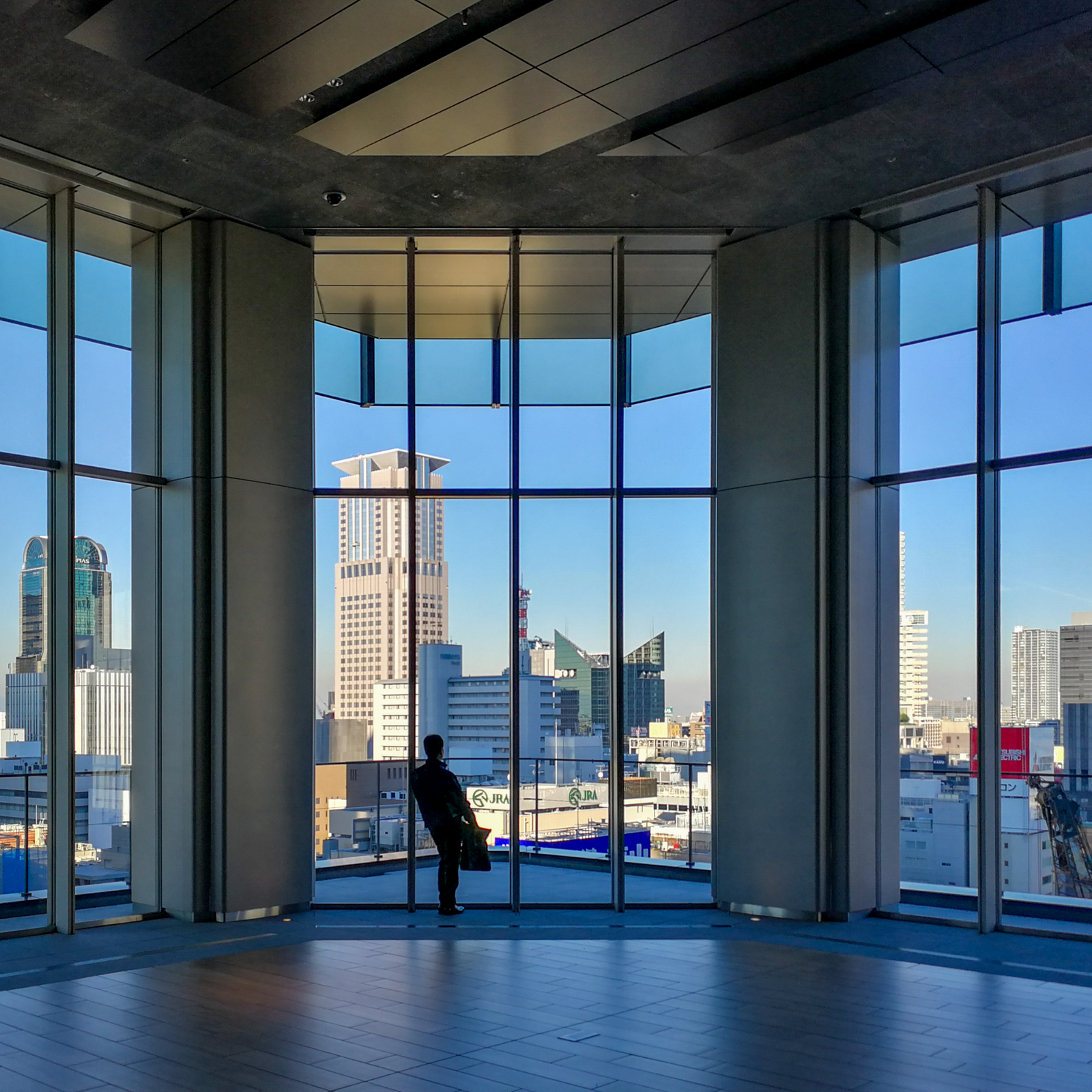Glass Blog
Regardless of the type of business you run, having a good storefront is critical in attracting customers, maximising security, and maintaining a solid business reputation.
What makes a shopfront good? Read on to find out.
Clutter-Free
No one wants to go into a store that looks cluttered and messy. Because of this, you should avoid putting too much signage and merchandise in your shopfront. Keep it relatively clear and make sure you clean it regularly.
Lighting
Making sure you have the right amount of lighting in your shopfront is also important in attracting potential customers. You want to have just enough lighting to illuminate your store and make it stand out, but not so much that it will appear overly-bright.
Security
Aside from drawing in customers, the main role of your shopfront is to keep your store secure. In order to achieve this, ensure the material your storefront is made from is strong and sturdy. If you want to install a glass shopfront, choose safety glass such as toughened or laminated glass. These glass types are significantly more resistant to force and less easy to break than standard annealed glass.
Easy to Maintain
Last but not least, for your sake, you want to ensure your shopfront is easy to clean and maintain. Select materials that stay cleaner for longer and don’t require excessive maintenance (such as glass and aluminium) over materials that get dirty quickly and require frequent touch-ups (such as timber).
If you’re wanting to install a new glass storefront in your business, call Magic Glass today. We can provide you with a free quote for a shopfront that will attract customers and keep your business safe!
Cladding systems are external wall systems that can be applied to the outside of buildings. They are used on both residential and commercial buildings, and offer numerous benefits including additional structural protection, noise and heat insulation, and improved aesthetics.
There are several different types of cladding, all of which have various pros and cons. Read on to find out about 6 of the most common types of cladding.
Vinyl Cladding
Due to its high durability, visual appeal, and low-cost, vinyl cladding is very popular in and around Sydney.
Made of a mix of PVC and other materials, vinyl cladding typically comes in the form of horizontally-placed panels. These panels can also be fitted with additional layers of insulation, allowing for greater thermal control within the building.
Compared to alternative cladding options, vinyl is considerably more lightweight, allowing panels to be completely flexible when covering a building. They are also available in countless colours, allowing for greater design versatility.
Timber Cladding
Timber is another popular material choice for cladding. It allows for an aesthetically pleasing finish as well as improved thermal insulation. Timber cladding is also eco-friendly and a great way for building owners to reduce their carbon footprint.
Timber cladding can, however, be costly and tricky to maintain. You’ll likely need to re-paint or re-stain your timber cladding every 3-5 years and take extra care to protect it from pests and rotting.
Stone Cladding
Stone cladding is more common for residential buildings rather than commercial buildings. It provides an elegant, luxurious finish for homes and is easy to maintain and highly effective in preventing moisture from getting in.
The main drawback of stone cladding is that it can be extremely expensive. Both material costs and labour/installation costs are very high.
Metal Cladding
Metal cladding, particularly aluminium cladding, is another very popular choice in Sydney. It provides a shiny and contemporary look for both residential and commercial buildings.
Metal cladding is popular because it’s versatile, easy to work with, lightweight, low-maintenance, cost-effective, and energy efficient. It is, however, susceptible to denting and is a poor sound insulator.
Brick Cladding
Brick cladding is another great option for adding a stylish touch to your building’s exterior. It is highly versatile when it comes to design, allowing for colour and textural customisation.
As brick is a very sturdy material, it provides a high level of protection against the elements and is very easy to maintain.
The installation of brick cladding can incur high labour costs, however, so it is one of the more expensive cladding options.
Glass Cladding
Last but not least, we have glass cladding. This type of cladding is most commonly used on commercial buildings to boost aesthetics and provide a modern and unique feel. It is also a great thermal insulator, requires little maintenance, and is capable of withstanding harsh weather conditions.
Glass cladding can, however, be expensive to install and clean, and is unsuitable for earthquake-prone areas.
For all your cladding installation, replacement, and maintenance needs, get in touch with Magic Glass. Our dedicated Rope Access Division can offer cost-effective and discrete cladding services for all buildings of all heights.
- Architectural Glass Solutions
- Building Maintenance
- Commercial Glass Installation
- Commercial Glass Replacement
- Commercial Glass Services
- Commercial Glazing
- Custom Glass
- Facade Services
- Glass Installation
- Glass Projects
- Glass Solutions
- Hi-Rise Glass
- High Rise Glass Services
- Rope Access
- Sydney Glass Company
Safety glass is a type of glass that is designed to be less likely to break and less likely to inflict serious injury in the rare event it does break. The two main types of safety glass include toughened (or tempered) glass and laminated glass.
One of the most common questions we get asked is ‘which type of glass is the safest?’ Although toughened glass is most commonly recommended for safety, it does ultimately come down to what it is being used for.
Toughened Glass
Toughened glass is manufactured through the use of thermally or chemically controlled treatment processes. It is these processes that strengthen the glass and make it more resistant to force.
Although it is very difficult to break toughened glass, it’s not impossible. In the rare event breakage does occur, toughened glass shatters into many smaller pieces rather than large, sharp shards of glass. Because of this property, it is much safer than standard, annealed glass and is significantly less likely to inflict injury. This is why toughened glass is often used in motor vehicle windows and diving masks.
Toughened glass is also Grade A safety glass and is therefore frequently used in areas and spaces where compliance with Australian Glass Safety Standards is a must. This includes schools, hospitals, low-level glazing, aged care facilities, and child care centres.
Laminated Glass
Laminated glass is composed of two pieces of glass with an interlayer commonly made from polyvinyl butyral. This prevents the glass pieces from shattering as they remain stuck to the interlayer rather than breaking off into sharp shards.
As laminated glass sticks together even when it is shattered, it provides much greater security against potential break-ins, severe weather, and sudden impact. Because of this, laminated glass is most commonly used in shopfronts, windows and doors, balustrades, and glass fencing.
If you’re wanting to install safety glass into your commercial or residential building and are still unsure which type is best for you, give Magic Glass a call! Our friendly team will be able to provide you with recommendations and point you in the right direction when it comes to installation.
We can also provide you with a free quote for custom safety glass fabrication and installation.
Proper maintenance of your building’s exterior is critical not only in terms of visual appeal, but also in terms of safety and functionality. Conducting facade inspections, cleaning and repairs can be a complex and time-consuming process, however. Fortunately, the use of rope access can make facade maintenance much more simple.
What is Rope Access?
Rope access involves the use of ropes and harnesses to traverse the exterior of buildings to conduct inspections, repairs, removals, installations, and cleaning services.
Due to strict training requirements and safety standards, rope access is considerably safer than alternative access methods such as the use of scaffolding and cranes.
Why is Rope Access Ideal for Facade Maintenance?
Aside from being the safest access method, rope access is also a faster, less-disruptive, and less-expensive method of carrying out facade maintenance work.
With little set-up and pack-up times, rope access drastically reduces the time it takes to carry-out facade work. This, in turn, cuts costs associated with labour and equipment and makes the process much more straight-forward.
In addition, the lack of scaffolds, platforms and cranes makes rope access a much more subtle process. This reduces disruption to your building and its inhabitants and won’t compromise your building’s visual appeal.
Rope access is also much more ideal for facade maintenance as it provides workers with greater mobility and flexibility to move around the building. This allows them to reach more difficult-to-access areas with very little restriction from equipment.
If you’re wanting to make the change to rope access, get in contact with the Magic Glass team today. Our dedicated Rope Access Division offers an abundance of services that will keep your building’s facade clean, safe and functional.
- Anchor Point Installation
- Building Maintenance
- Commercial Glass Replacement
- Commercial Glass Services
- Commercial Glazier
- Commercial Glazing
- Facade Cleaning
- Facade Maintenance
- Facade Services
- Glass Maintenance
- Glass Services
- Glazing Services
- Hi-Rise Glass
- High Rise Glass Services
- Magic Glass
- Rope Access
- Window Cleaning
Owning or managing a large scale commercial or residential building comes with a vast amount of legal responsibilities. If you are a building owner, Building Manager or Strata Manager, you are responsible for providing all residents, workers, and visitors with a safe environment. This includes ensuring they are protected from any glass related accidents.
Whether major or minor, glass accidents are dangerous and can pose the risk of injury and even death. If the accident is found to be a result of the building not being up to safe standards, Building and Strata Managers can be liable for negligence.
To ensure the glass in your building is safe, the first thing you must do is check that it is compliant with Australian Standards AS2208-1996 and AS1288-2006. These are the standards relating to safety glazing materials in buildings and glass in buildings, respectively.
AS2208 and AS1288 present the circumstances in which you must have safety glass installed instead of standard glass. As the name suggests, this glass is safer and stronger than typical glazing units.
These standards also state requirements relating to the thickness and dimensions of glass doors and panels, balustrades and glass used in schools, childcare centres, and nursing homes.
Ensuring all glass in your building is up to Australian standards can be a strenuous activity, but it must be done. Fortunately, Magic Glass is here to support you along the way.
Magic Glass is a member of the Australian Glazing and Glazier Association (AGGA). We are proudly accredited by the AGGA as we have demonstrated how our products and services are safe and comply with Australian Standards. Being one of the founding members of the association, we take our accreditations seriously and strive to maintain the reputable standards we have set for ourselves.
Should you find that any of the glass in your building does not comply with the legal requirements outlined above, contact Magic Glass for a free quote to remove and replace the glass to all relevant Australian Standards.













